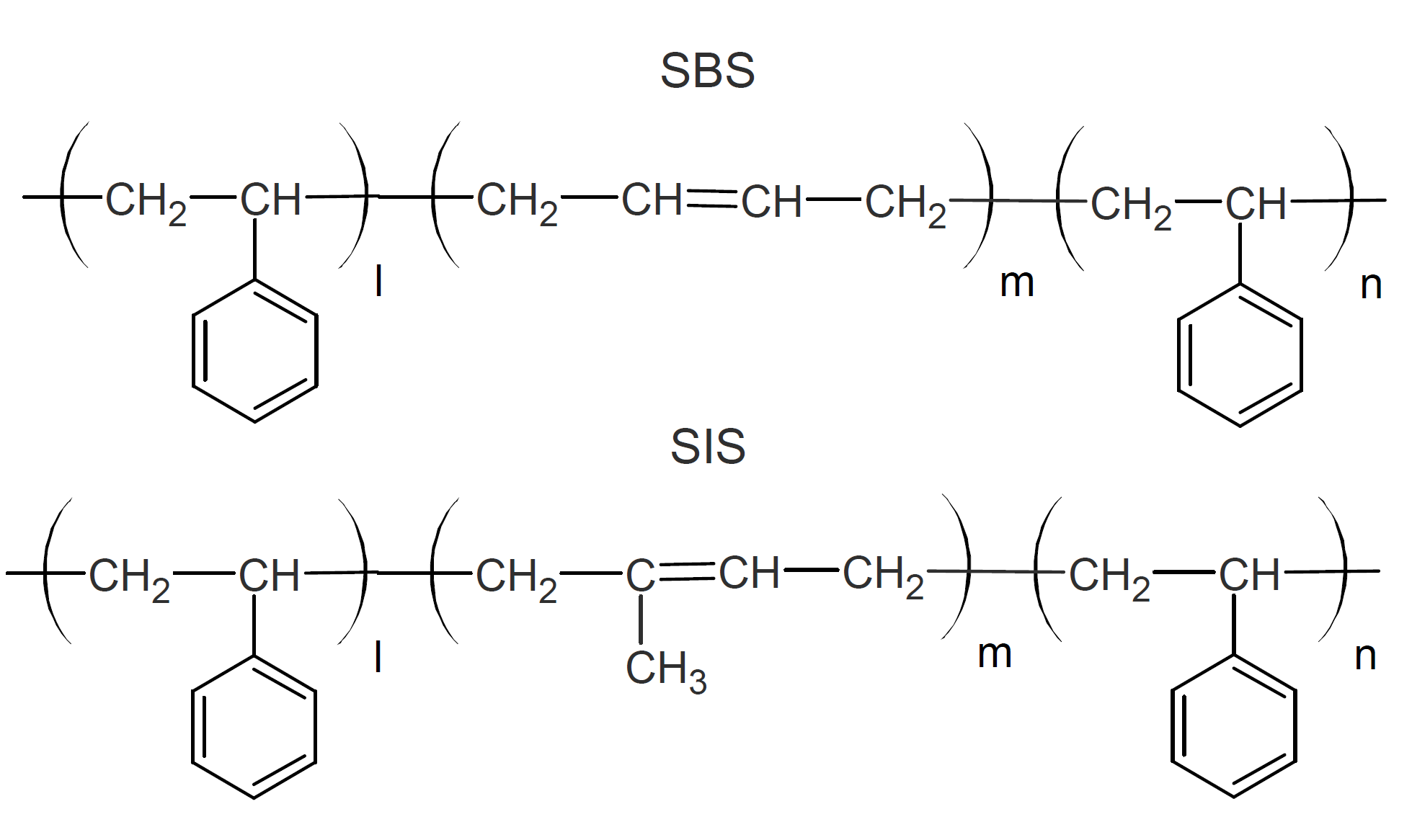Styrenic Block Copolymers
(SBS, SIS, SEBS)
Properties
Styrenic block copolymers are the largest volume and one of the lowest priced commercial thermoplastic elastomers. They are produced by ionic copolymerization of styrene and butadiene (SBS) or of styrene and 2-methyl-1,3-butadiene (SIS). These polymers are often blended with many other polymers, and with oil and fillers, which allows for a versatile modification of product properties.

When cooled from the melt state to a temperature below the glass transition, the polystyrene blocks phase separate to form rigid and hard domains that act as physical cross-links for the elastomeric diene blocks.
The most important tri-block copolymer is SBS. It has higher tensile strength than SBR rubber but only limited heat resistance. SBS and SIS are less resilient than chemically crosslinked elastomers and thus, do not recover as efficiently from deformation as vulcanized diene elastomers.
Because of the presence of double bonds in the midblock structure, both SBS and SIS are vulnerable to thermal and oxidative degradation. For polybutadiene, degradation generally occurs through crosslinking, and for polyisoprene through chain scission. By selective hydrogenation of the midblock to ethylene-butylene (EB) repeat units the triblock copolymers become substantially more stable. These so called SEBS block copolymers have much improved thermal and weathering resistance but less good mechanical properties.
Commercial SBS and SIS Rubbers
Major manufacturers of SBS rubbers are Firestone, GoodYear, Kraton and Lanxess and of SIS Zeon, Kraton, and JSR.
Applications
Styrenic block copolymers are often used to enhance the performance of many products. They are widely used in sealants, gasket materials, hotmelt adhesives, rubber bands, toy products, shoe soles and in bitumen products for road paving and roofing applications. They are also used as impact modifiers and tougheners in plastics and adhesives.